21 Animals That Make The Loudest Sounds In The Wild
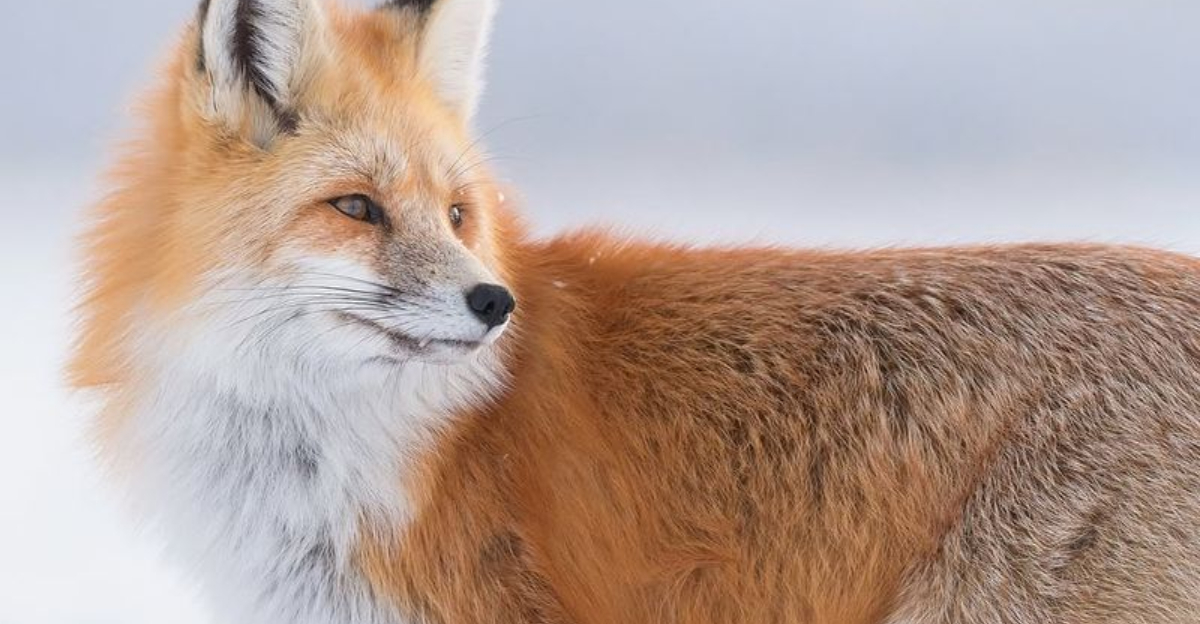
In the vast expanse of the wild, where nature’s symphony plays unceasingly, certain animals stand out for their remarkable vocalizations. These creatures, from the depths of the oceans to the dense jungles, have evolved unique adaptations to make their voices heard.
Let’s explore these magnificent animals that dominate the soundscape of the natural world.
1. Blue Whale
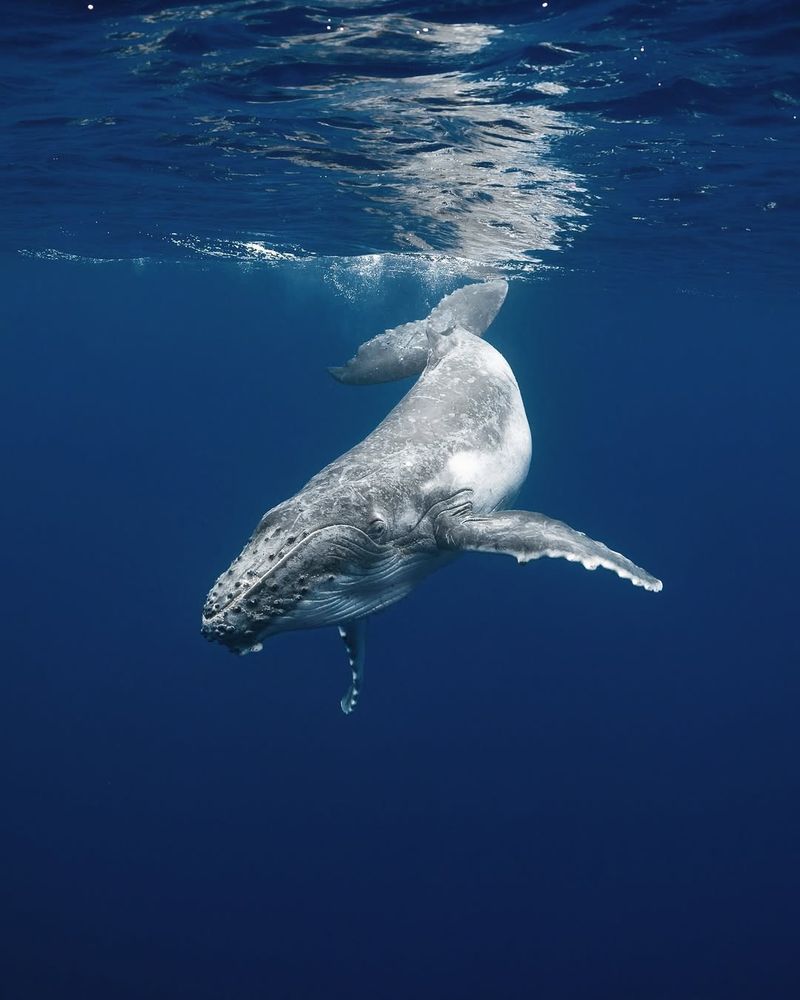
The blue whale, the largest animal on Earth, also holds the title for the loudest. Its calls can reach up to 188 decibels, louder than a jet engine.
These low-frequency pulses can travel hundreds of miles underwater, serving as a communication tool with other whales.
Despite their size, blue whales are gentle giants, feeding primarily on small shrimp-like animals called krill. In the vast ocean, their songs are a testament to the grandeur and mystery of marine life.
2. Howler Monkey
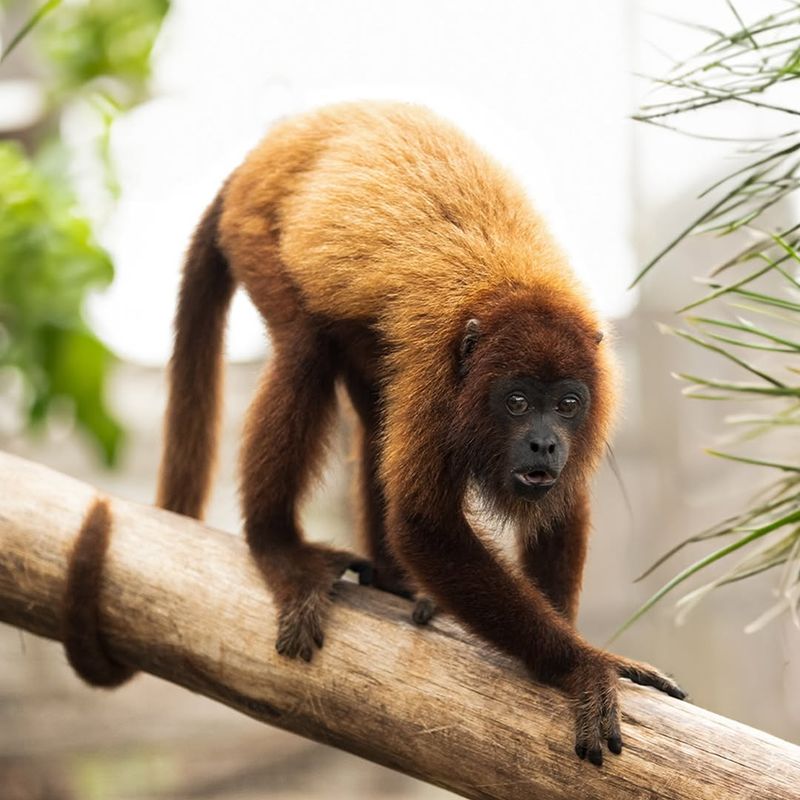
High in the treetops of Central and South America, the howler monkey makes its presence known with a howl that can be heard up to three miles away.
These vocalizations, primarily used to mark territory, are surprisingly complex and can vary between groups. Living in family troops, they spend much of their day lounging in trees and munching on leaves.
The sound of a howler monkey is both a warning and an invitation to understand the complexities of their social structures.
3. Elephant
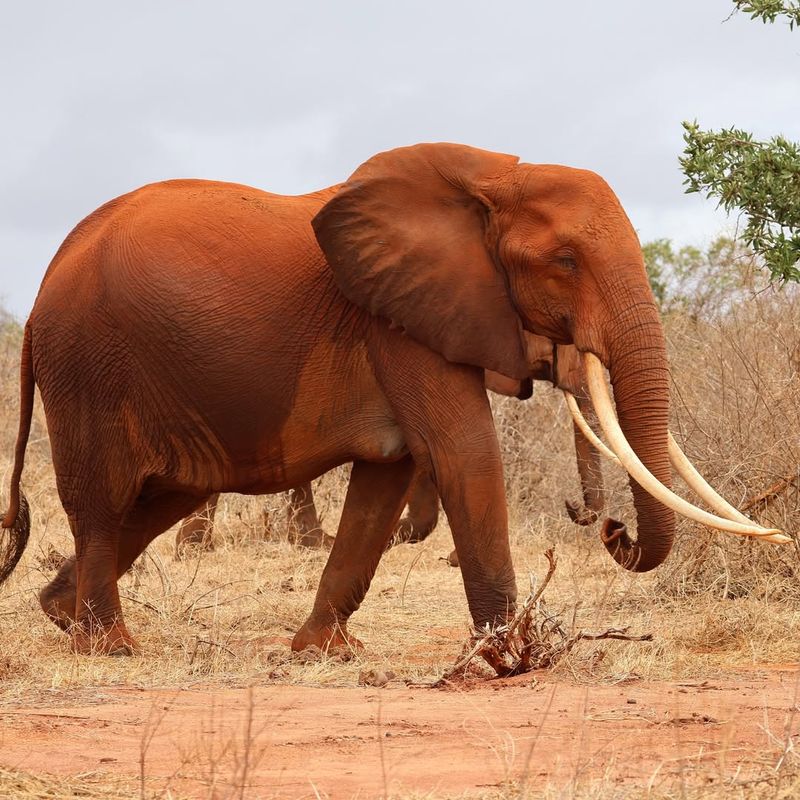
In the grasslands of Africa and Asia, elephants are known for their trumpeting calls, which can reach 110 decibels. These sounds are vital for communication within their herds, helping them to coordinate movements and warn of danger.
Elephants have a rich social structure and their vocalizations are integral to maintaining these bonds.
Their trumpets resonate across the plains, a reminder of their intelligence and the strong family ties that hold their herds together amidst the challenges of the wild.
4. Bullfrog
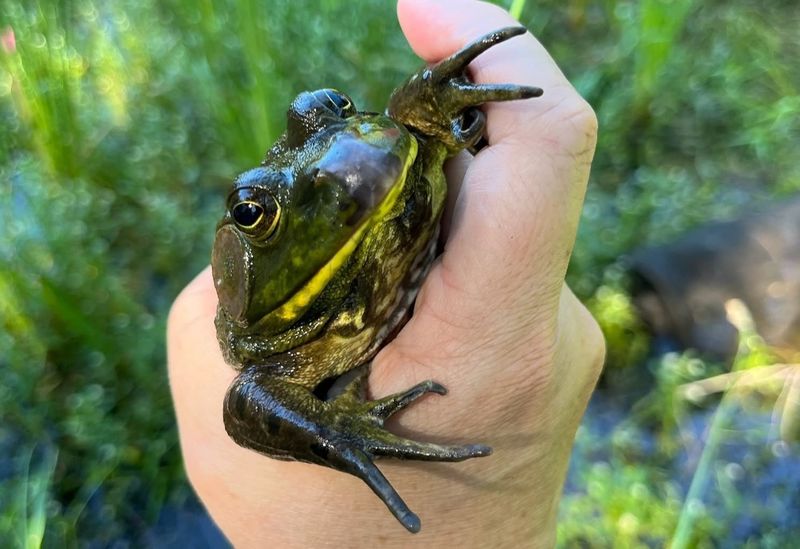
The bullfrog’s deep croak is a familiar sound in freshwater habitats across North America. These amphibians use their vocal sacs to amplify their calls, which serve to attract mates and establish territory.
Bullfrogs are opportunistic feeders, consuming insects, small mammals, and even birds. Their calls, often heard on warm summer nights, are a quintessential aspect of the natural soundscape, echoing across ponds and wetlands, reminding us of the intricate cycles of life in aquatic ecosystems.
5. Lion
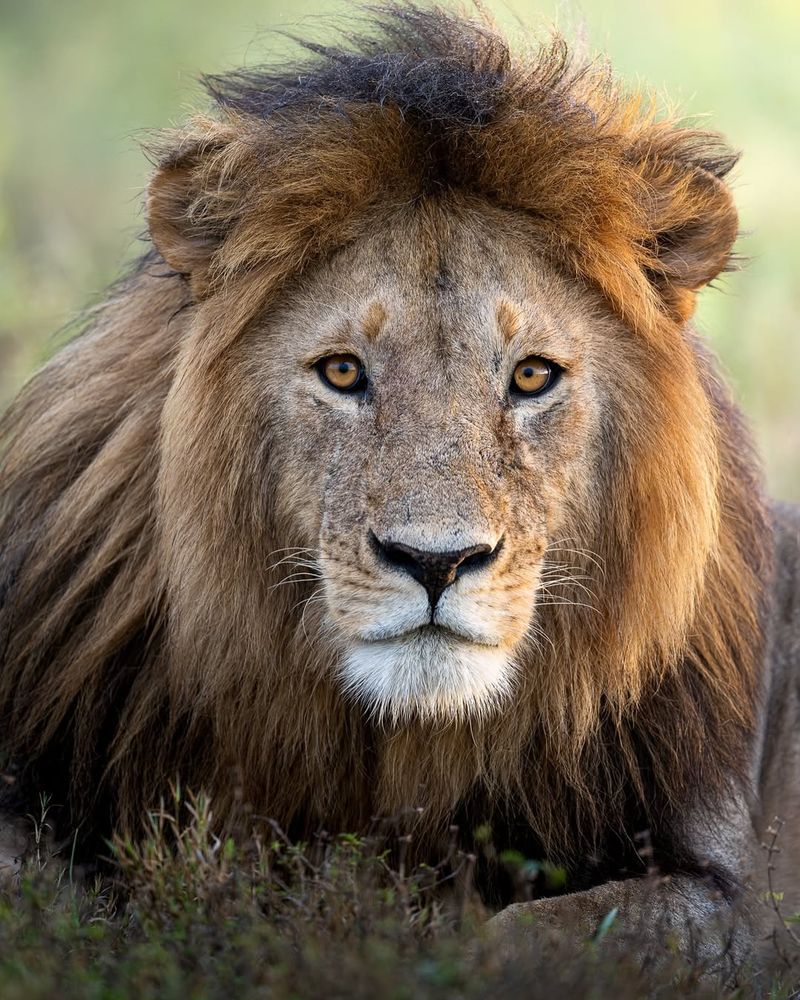
The king of the jungle, the lion, roars with an intensity that can be heard up to five miles away. Lions use their roars to communicate with their pride and to ward off intruders.
Living in the savannahs of Africa, they are social animals with complex group dynamics. A lion’s roar is a chilling sound, synonymous with power and dominance, echoing through the savannahs as a symbol of their reign over the animal kingdom.
It’s a call of strength and unity for their pride.
6. Kakapo
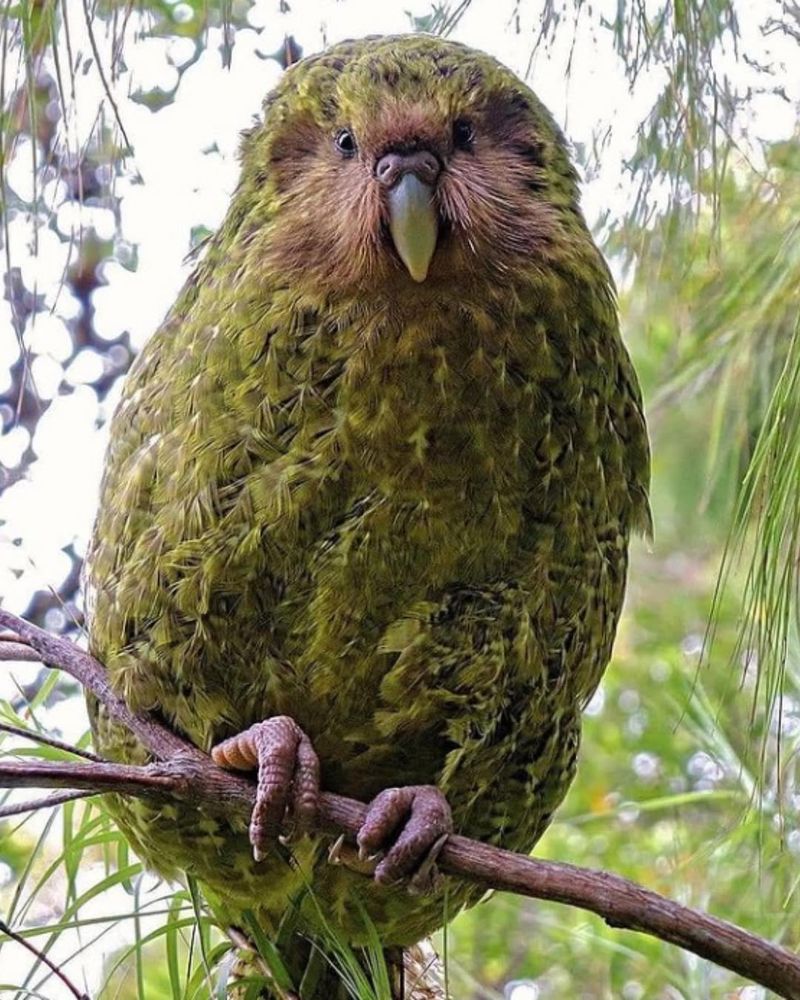
The nocturnal kakapo, a flightless parrot from New Zealand, boasts a unique booming call that resonates through the night.
This sound is crucial during the breeding season, helping males attract females over long distances in the dense forest. Kakapos are critically endangered, with conservation efforts in place to protect their dwindling numbers.
Their calls are not just a mating call but a beacon of hope for their survival, emphasizing the importance of conservation and biodiversity.
7. Cicada
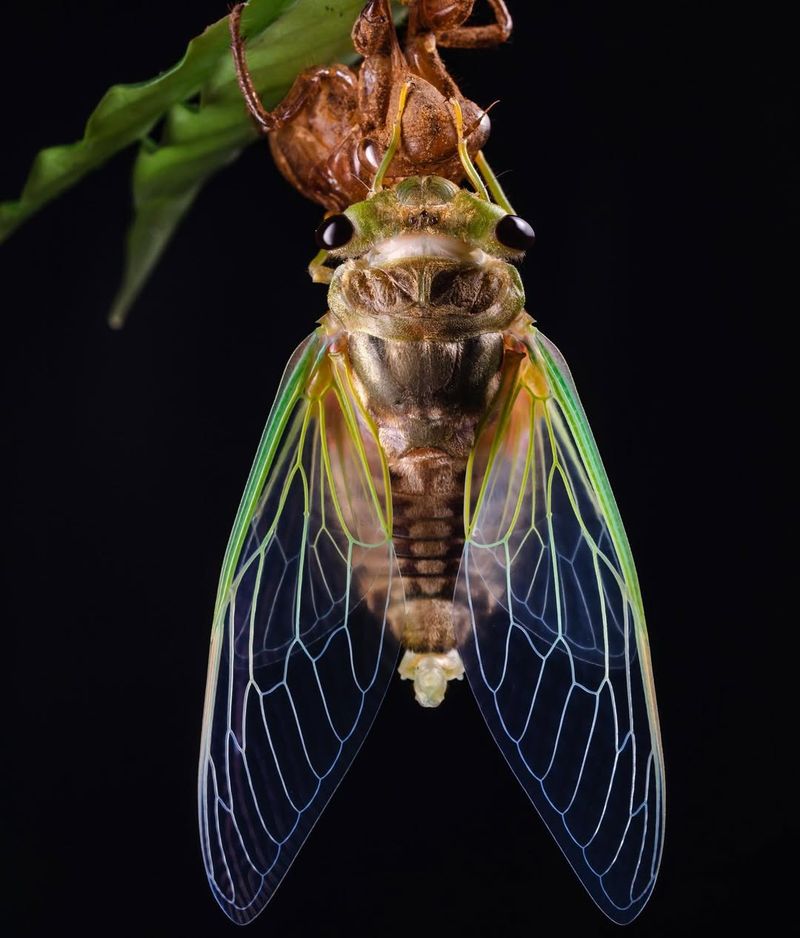
Cicadas are insects known for their deafening chorus, particularly during summer months. Found in many parts of the world, these insects use their tymbals to produce sound, sometimes reaching 120 decibels. The noise serves to attract mates and can vary between species.
Cicadas emerge in large numbers, creating a symphony that fills the air, a phenomenon both mesmerizing and overwhelming.
Their life cycle, with years spent underground, culminates in this brief yet sonorous celebration of life.
8. Hyena
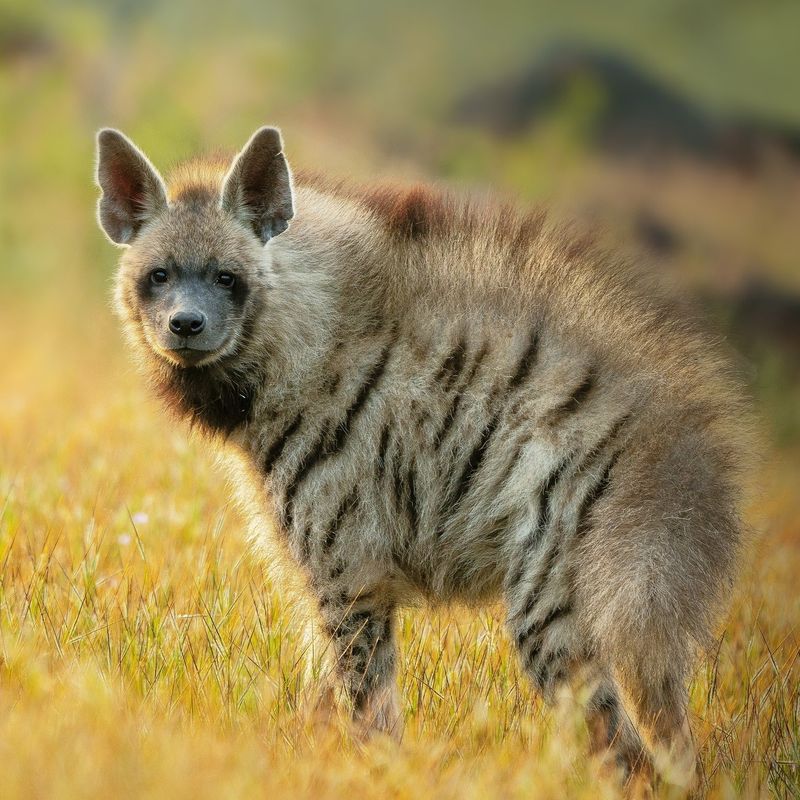
Hyenas are known for their distinctive ‘laugh,’ a vocalization that can be both eerie and intriguing. Found in Africa, these calls serve various purposes, from coordinating hunts to communicating social status within their clan.
Despite their comical reputation, hyenas are intelligent and efficient predators.
Their calls, echoing across the savannah, are not just sounds of humor but also signals of their complex social interactions and survival strategies in the harsh African wilderness.
9. Screaming Piha
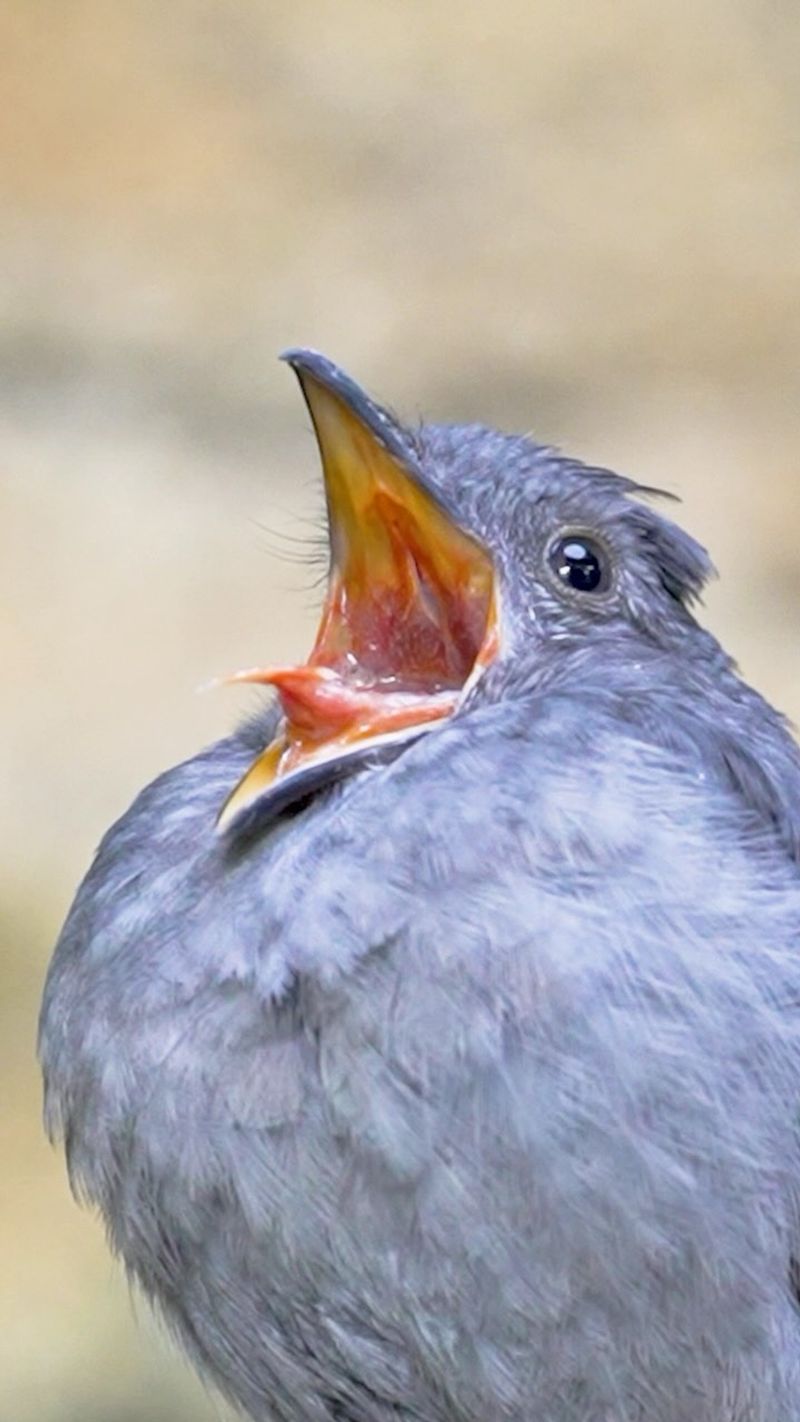
The screaming piha, a small bird native to the Amazon rainforest, is renowned for its incredibly loud call.
Despite its modest size, this bird produces a sound that can be heard for miles, often described as the loudest bird call in the forest.
Its piercing song is a vital part of its mating ritual, echoing through the dense canopy. The piha’s call is a reminder of the vibrant life within the rainforest, a symphony of nature’s exuberance and diversity.
10. Wolverine
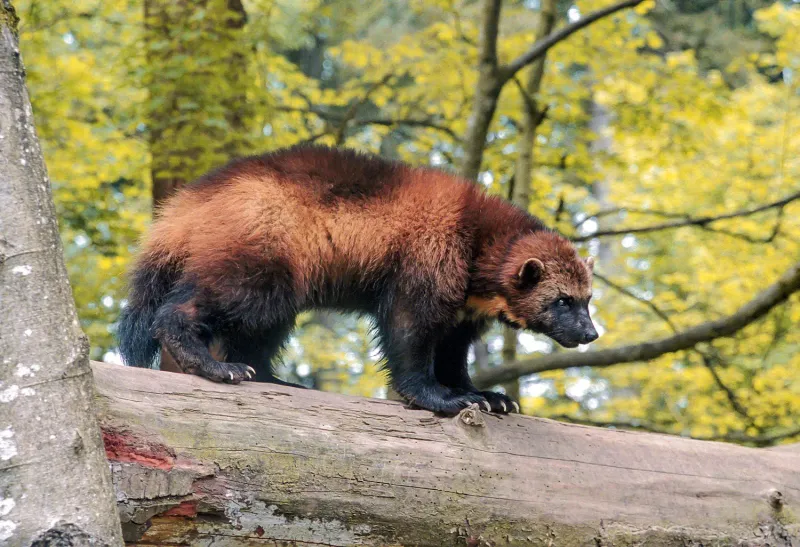
Wolverines, though small, have a reputation for their fierce growls and formidable presence in the wild. Found in remote forested areas of the Northern Hemisphere, their vocalizations are used to deter predators and rivals.
Wolverines are solitary creatures, known for their strength and aggressive nature. Their growls resonate through the wilderness, a testament to their survival skills and adaptability.
Despite their elusive nature, the wolverine’s sound is a powerful reminder of the untamed spirit of the wild.
11. Peacock
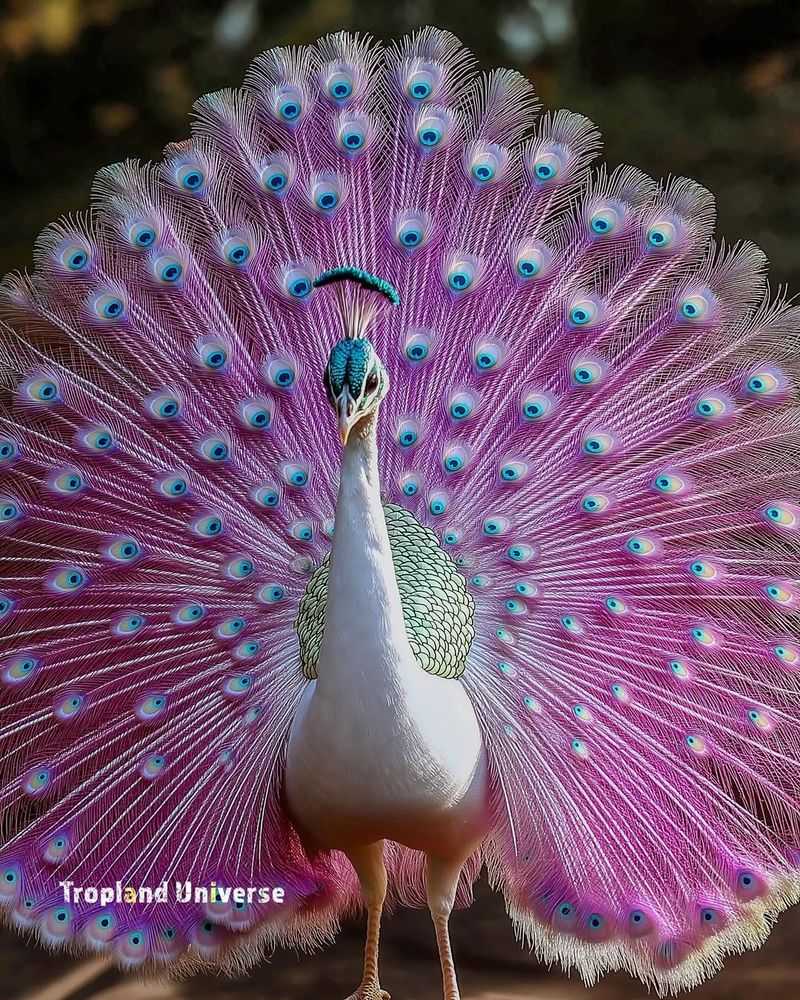
Peacocks are as famous for their calls as they are for their vibrant plumage. The male’s loud cries serve to attract females and establish territory.
Found in India and other parts of Asia, these birds are often seen in gardens and forests. Their calls, a mix of loud screams and honks, are a staple of their courtship display.
The sound of a peacock is a herald of beauty and grandeur, echoing the splendor of its visual display, and a reminder of nature’s artistry.
12. Greater Bulldog Bat
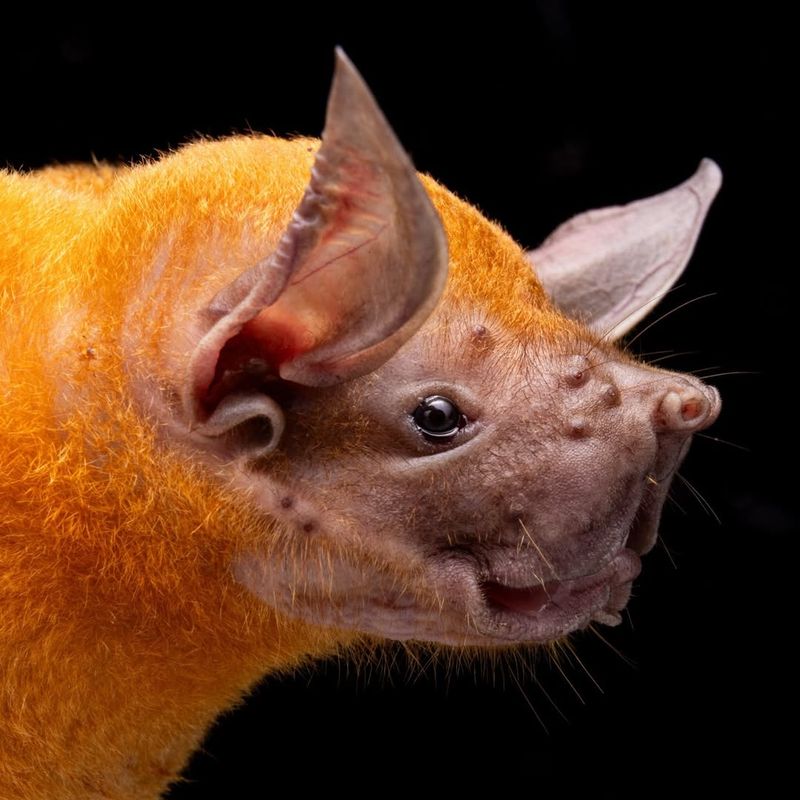
The greater bulldog bat uses loud echolocation calls for hunting, a skill vital for its survival. Found in Central and South America, these bats emit sounds that bounce off objects to locate prey, primarily fish.
Their calls can be quite loud, reaching levels necessary to detect subtle movements in water. As masters of the night, the bulldog bat’s echolocation is a fascinating adaptation, showcasing the complexities of evolution.
Their sound is an ode to the dark, a melody of precision and skill.
13. Coqui Frog
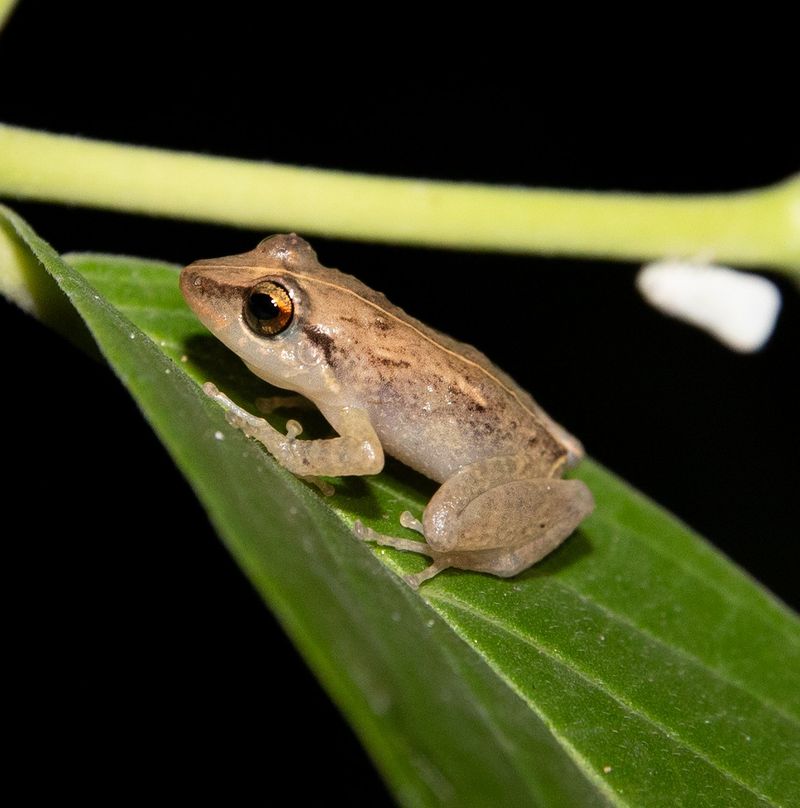
The coqui frog, native to Puerto Rico, is famous for its distinctive ‘co-qui’ call, which can be heard throughout the night.
These frogs use their calls to mark territory and attract mates. Despite their small size, coqui frogs produce a surprisingly loud sound that defines the nocturnal soundscape of their habitats.
Their calls are a cultural symbol in Puerto Rico, a nightly serenade that resonates with the rhythm of the tropical island, weaving nature’s song into the fabric of local life.
14. Red Fox
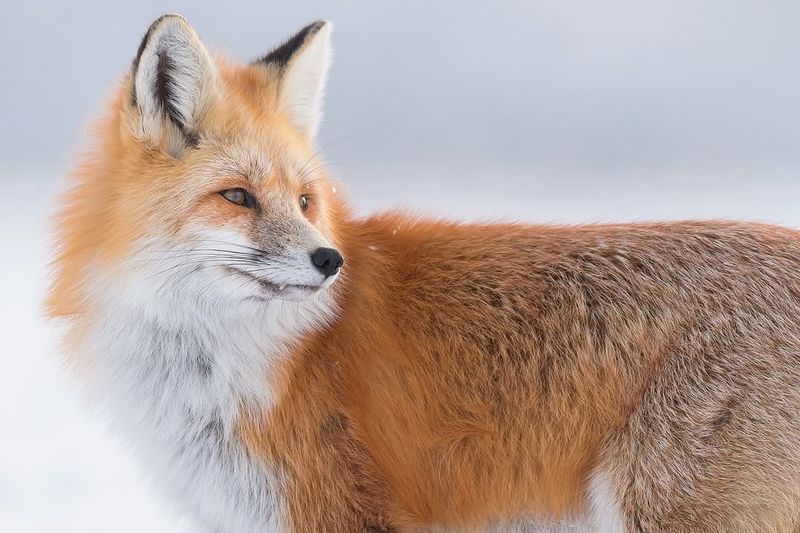
Red foxes are known for their sharp, barking calls, which serve as communication tools within their territories.
Found across the Northern Hemisphere, these nocturnal hunters use their vocalizations to signal danger, call to mates, and maintain social bonds.
A fox’s call can be startling, piercing the silence of the night. Yet, it is an essential part of their life, a cry that ensures their survival and showcases their adaptability to various environments, from urban areas to dense forests.
15. Gibbon
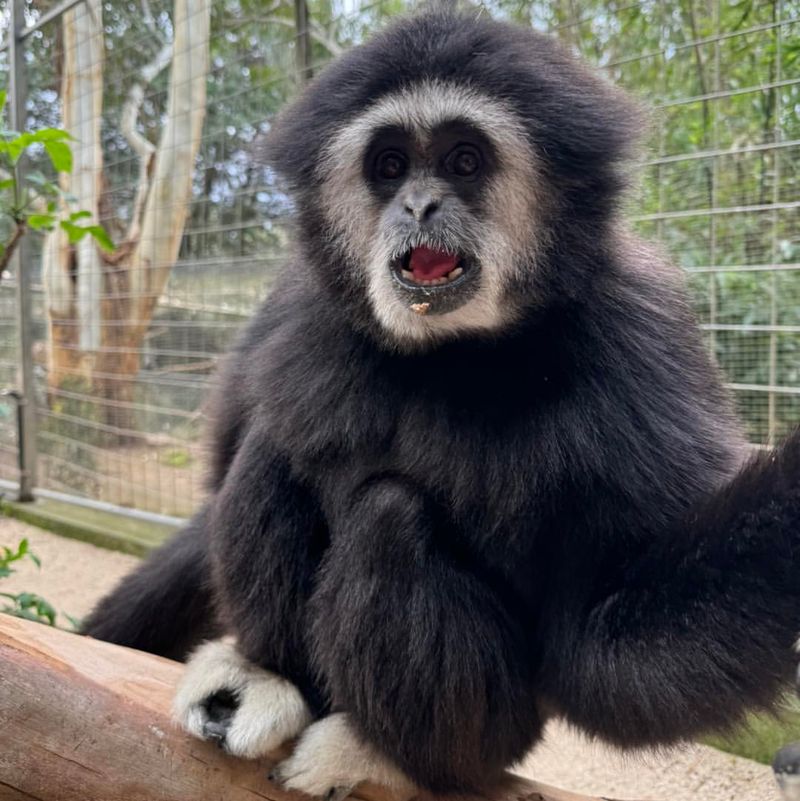
Gibbons are the acrobats of the primate world, their whooping calls echoing through the forests of Southeast Asia.
These songs serve as territorial calls and a bonding ritual among family groups. Gibbons live in monogamous pairs, and their duets can be heard over long distances.
The sound of a gibbon is both a declaration of territory and a harmonious expression of family life, swinging through the treetops with grace and agility, a melody of love and partnership in the wild.
16. Tiger
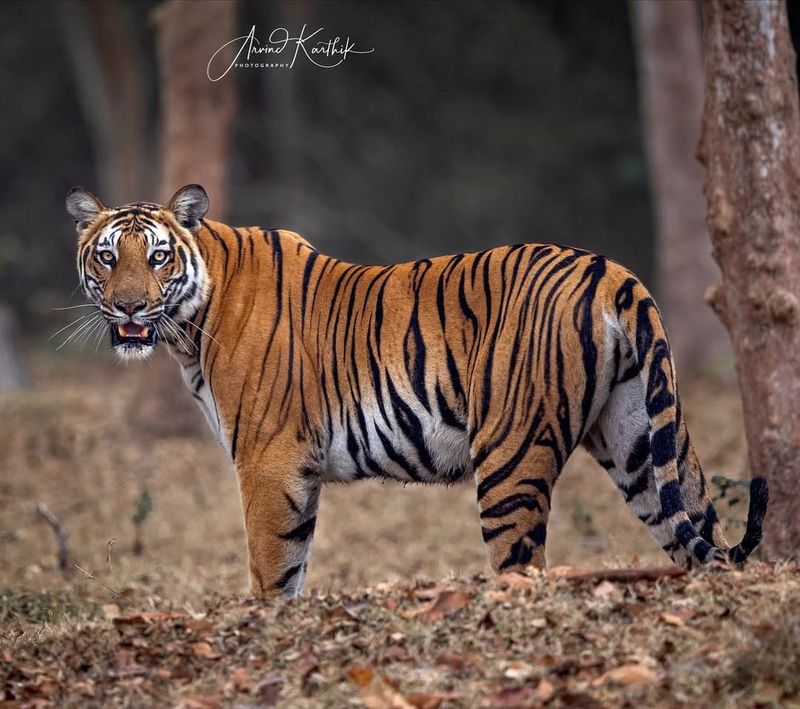
Tigers, apex predators of the jungle, are known for their powerful roars, which can be heard as far as two miles away.
These vocalizations are used to communicate territorial boundaries and to locate mates. Tigers roam the forests of Asia, where their presence is marked by these fearsome calls.
A tiger’s roar is a symbol of strength and majesty, a sound that commands respect and reinforces their position at the top of the food chain, echoing through the dense foliage.
17. Hippo
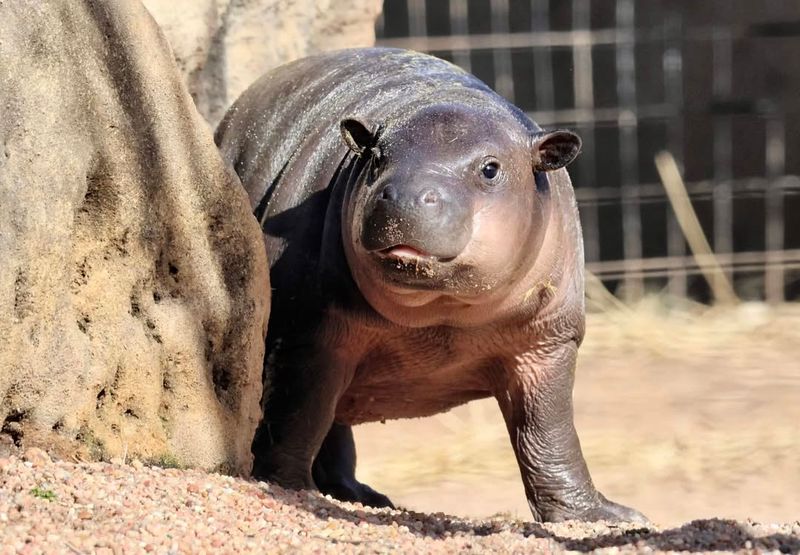
Hippos are surprisingly vocal creatures, their bellows resonating across African rivers and lakes. These sounds, which can reach 115 decibels, serve to establish territory and communicate with others.
Hippos spend much of their time in water, where their vocalizations are amplified. Despite their seemingly docile appearance, they are among the most dangerous animals in Africa.
A hippo’s bellow is both a warning and a display of their formidable presence, echoing across the water as a testament to their dominance.
18. Ruffed Grouse
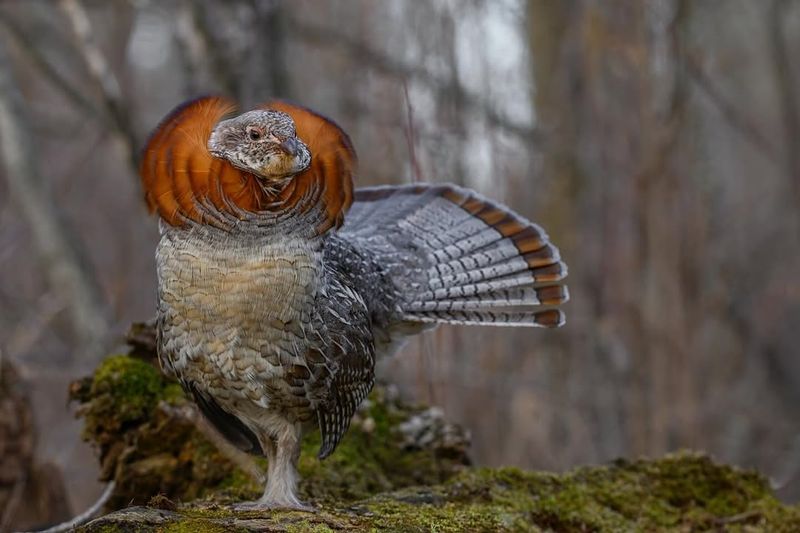
Ruffed grouse are known for their unique drumming sound, produced by rapidly beating their wings. Found in North American forests, this sound is part of their mating ritual, echoing through the trees.
The drumming is not only a call to potential mates but also a territorial declaration.
The sound of a ruffed grouse is a rhythmic heartbeat of the forest, a pattern that marks the beginning of spring, resonating through the woods as a signal of renewal and life.
19. Koala
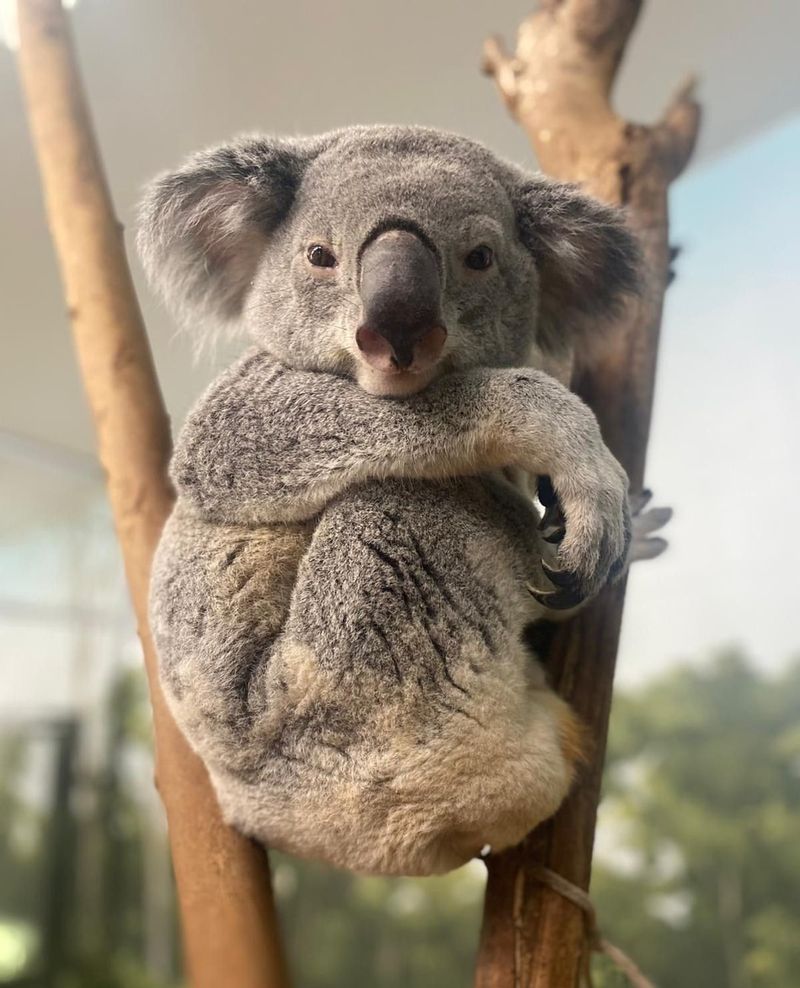
Koalas, while often perceived as silent, can produce surprisingly loud bellows. These sounds are part of their breeding calls, used by males to attract females and warn off rivals.
Found in the eucalyptus forests of Australia, their bellows are a reminder of the challenges these animals face.
Koalas are iconic, yet vulnerable, and their calls echo the need for conservation.
The sound of a koala is a gentle roar, a unique voice in the Australian wilderness, calling for attention and care.
20. Wolf
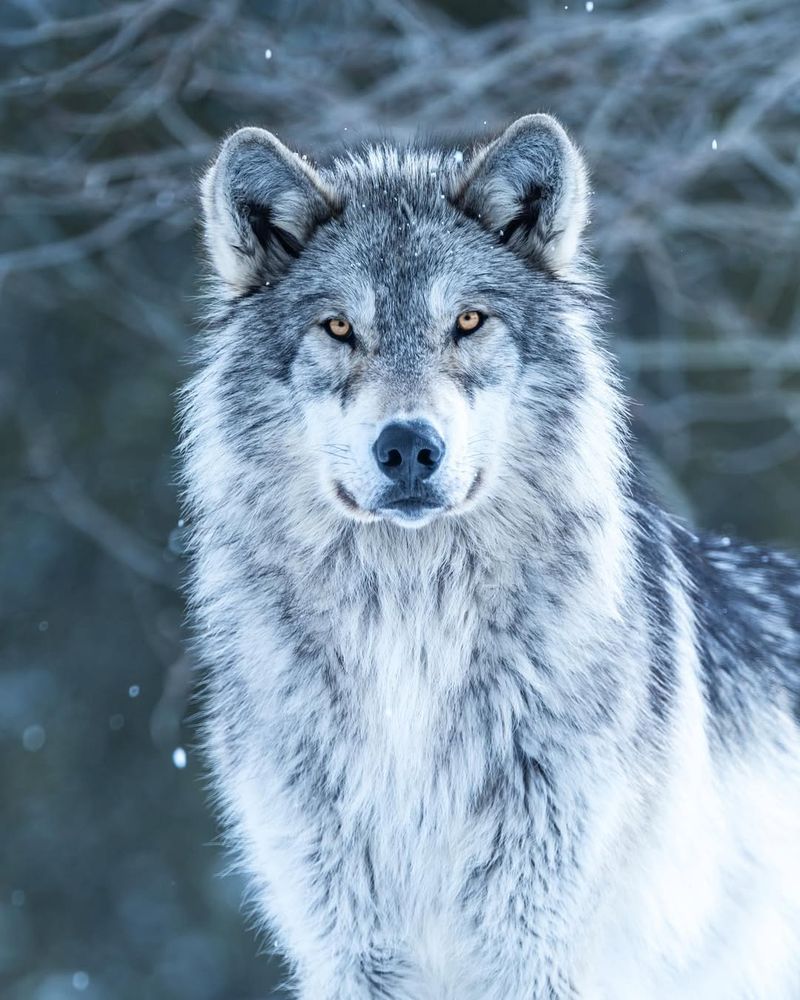
Wolves are synonymous with their haunting howls, sounds that serve to communicate with pack members and define territory. Found across various ecosystems, from forests to tundras, their howls can travel vast distances.
These vocalizations are essential for maintaining pack cohesion and coordinating hunts.
A wolf’s howl is a sound of unity and survival, a chilling yet beautiful melody that resonates with the wild, embodying the spirit of freedom and the intricate social bonds of these apex predators.
21. Sperm Whale
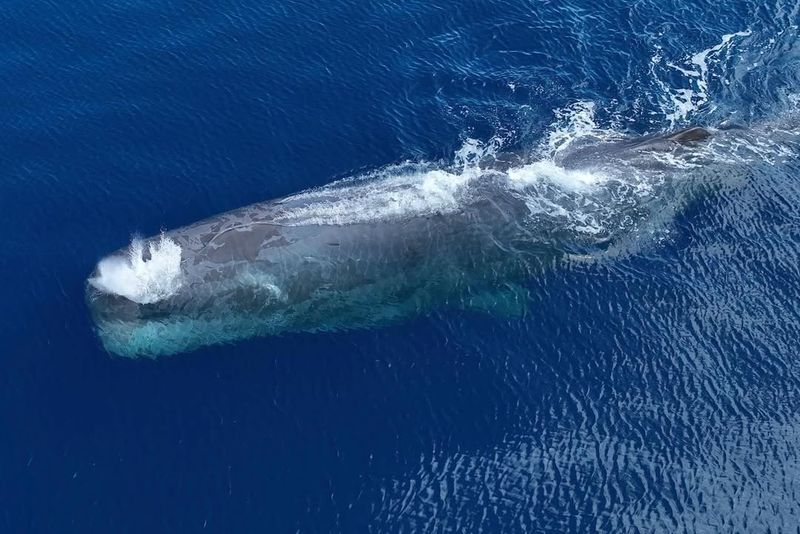
Sperm whales are known for their powerful clicks used in echolocation, essential for hunting in the deep ocean.
These clicks can reach 230 decibels, making them the loudest of any animal. Found in oceans worldwide, sperm whales use these sounds to navigate and communicate.
The clicks are a symphony of the sea, a guide through the dark depths where light does not penetrate. These vocalizations are a testament to the intelligence and adaptation of one of the ocean’s most formidable creatures.
